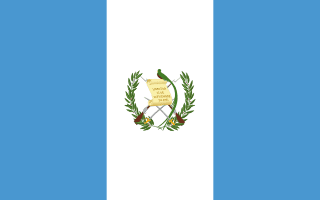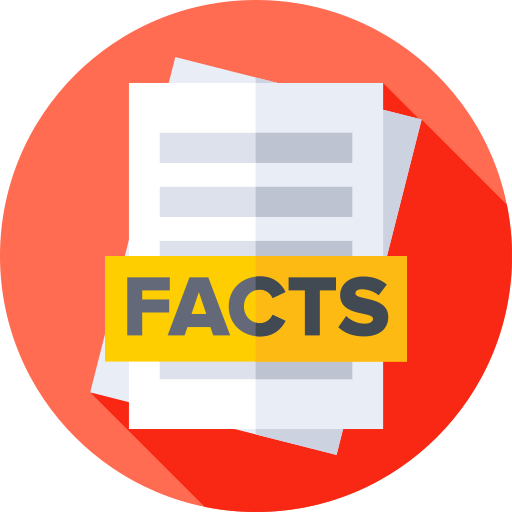Guatemala - Geography

Here, let us take a look at the Geography of Guatemala.
note 1: despite having both eastern and western coastlines (Caribbean Sea and Pacific Ocean respectively), there are no natural harbors on the west coast
note 2: Guatemala is one of the countries along the Ring of Fire, a belt of active volcanoes and earthquake epicenters bordering the Pacific Ocean; up to 90% of the world's earthquakes and some 75% of the world's volcanoes occur within the Ring of Fire
. Mother's mean age at first birth is 20.6 years (2014/15 est.) (Note: data represents median age at first birth among women 25-49), whereas, the Maternal mortality ratio is 96 deaths/100,000 live births (2020 est.)Geographical data of Guatemala
| Location | Central America, bordering the North Pacific Ocean, between El Salvador and Mexico, and bordering the Gulf of Honduras (Caribbean Sea) between Honduras and Belize |
|---|---|
| Geographic coordinates | 15 30 N, 90 15 W |
| Map references | Central America and the Caribbean |
| Tarrain | two east-west trending mountain chains divide the country into three regions: the mountainous highlands, the Pacific coast south of mountains, and the vast northern Peten lowlands |
| Natural Resources | petroleum, nickel, rare woods, fish, chicle, hydropower |
| Natural Hazards | numerous volcanoes in mountains, with occasional violent earthquakes; Caribbean coast extremely susceptible to hurricanes and other tropical storms volcanism: significant volcanic activity in the Sierra Madre range; Santa Maria (3,772 m) has been deemed a Decade Volcano by the International Association of Volcanology and Chemistry of the Earth's Interior, worthy of study due to its explosive history and close proximity to human populations; Pacaya (2,552 m), which erupted in May 2010 causing an ashfall on Guatemala City and prompting evacuations, is one of the country's most active volcanoes with frequent eruptions since 1965; other historically active volcanoes include Acatenango, Almolonga, Atitlan, Fuego, and Tacana; see note 2 under "Geography - note" |
| Irrigated Land | 3,375 sq km (2012) |
| Major rivers (by length in km) | |
| Major aquifers | |
| Land Boundaries | 1,667 km |
| Border Countries | Belize 266 km; El Salvador 199 km; Honduras 244 km; Mexico 958 km |
| Coastline | 400 km |
| Climate | tropical; hot, humid in lowlands; cooler in highlands |
| Area | |
| Total Area | |
| Land Area | 107,159 sq km |
| Water Area | 1,730 sq km |
| comparative Area | slightly smaller than Pennsylvania |
| Maritime Claims | |
| Territorial sea | 12 nm |
| Exclusive economic zone | 200 nm |
| Continental shelf | 200-m depth or to the depth of exploitation |
| Elevations | |
| Highest point | Volcan Tajumulco (highest point in Central America) 4,220 m |
| Lowest point | Pacific Ocean 0 m |
| Mean elevation | 759 m |
| Land Use | |
| Agricultural land | 43% (2022 est.) |
| Agricultural land: arable land | arable land: 14.5% (2022 est.) |
| Agricultural land: permanent crops | permanent crops: 11% (2022 est.) |
| Agricultural land: permanent pasture | permanent pasture: 17.5% (2022 est.) |
| Forest | 32.7% (2022 est.) |
| Other | 24.3% (2022 est.) |
Population Distribution
The vast majority of the populace resides in the southern half of the country, particularly in the mountainous regions; more than half of the population lives in rural areas
People and Society
In Guatemala, the different Ethnic groups are such that we have: Mestizo (mixed Indigenous-Spanish - in local Spanish called Ladino) 56%, Maya 41.7%, Xinca (Indigenous, non-Maya) 1.8%, African descent 0.2%, Garifuna (mixed West and Central African, Island Carib, and Arawak) 0.1%, foreign 0.2% (2018 est.)
| Population | |
|---|---|
| Pop growth rate | 1.49% (2024 est.) |
| Birth rate | 21.4 births/1,000 population (2024 est.) |
| Death rate | 4.9 deaths/1,000 population (2024 est.) |
| Health expenditure | 6.9% of GDP (2021) |
| Physicians Density | |
| Hospital bed Density | 0.4 beds/1,000 population (2017) |
| Total fertility rate | 2.52 children born/woman (2024 est.) |
| Gross reproduction rate | 1.23 (2024 est.) |
| Contraceptive prevalence rate | 60.6% (2014/15) |
| Est married women (ages 15-49) | 57.2% (2023 est.) |
| Literacy | age 15 and over can read and write |
| Education expenditures | 3.1% of GDP (2021 est.) |
| Net Migration rate | -1.6 migrant(s)/1,000 population (2024 est.) |
| Nationality | Guatemalan | Guatemalan(s) |
| Languages | |
| Religions | Evangelical 45.7%, Roman Catholic 42.4%, none 11%, unspecified 0.9% (2023 est.) |
| Age Structure | |
| 0-14 years | 31.5% (male 2,925,079/female 2,819,927) |
| 15-64 years | 63.2% (male 5,688,500/female 5,839,958) |
| 65 years and over | 5.4% (2024 est.) (male 437,105/female 544,647) |
| Dependency Ratios | |
| Total dependency ratio | 60.9 |
| Youth dependency ratio | 53 |
| Elderly dependency ratio | 7.9 |
| Potential support ratio | 12.7 (2021 est.) |
| Median Age | |
| Total | 24.8 years (2024 est.) |
| Male | 24.2 years |
| Female | 25.4 years |
| Urbanization | |
| Urban population | 53.1% of total population (2023) |
| Rate of urbanization | 2.59% annual rate of change (2020-25 est.) |
| Major urban areas (Pop) | 3.095 million GUATEMALA CITY (capital) (2023). |
| Sex Ratio | |
| At birth | 1.05 male(s)/female |
| 0-14 years | 1.04 male(s)/female |
| 15-64 years | 0.97 male(s)/female |
| 65 years and over | 0.8 male(s)/female |
| Total population | 0.98 male(s)/female (2024 est.) |
| Infant Motality | |
| Total | 25 deaths/1,000 live births (2024 est.) |
| Male | 28.1 deaths/1,000 live births |
| Female | 21.7 deaths/1,000 live births |
| Life Expectancy at birth | |
| Total population | 73.5 years (2024 est.) |
| Male | 71.5 years |
| Female | 75.6 years |
| Drinking Water Sources | |
| Improved: urban | urban: 97.9% of population |
| Improved: rural | rural: 92.2% of population |
| Improved: total | total: 95% of population |
| Unimproved: urban | urban: 2.1% of population |
| Unimproved: rural | rural: 8% of population |
| Unimproved: total | total: 5% of population (2020 est.) |
| Sanitation facility acess | |
| Improved: urban | urban: 90.4% of population |
| Improved: rural | rural: 66.3% of population |
| Improved: total | total: 78.8% of population |
| Unimproved: urban | urban: 9.6% of population |
| Unimproved: rural | rural: 33.7% of population |
| Unimproved: total | total: 21.2% of population (2020 est.) |
| Alcohol consumption per capita | |
| Total | 1.63 liters of pure alcohol (2019 est.) |
| Beer | 0.9 liters of pure alcohol (2019 est.) |
| Wine | 0.05 liters of pure alcohol (2019 est.) |
| Spirits | 0.68 liters of pure alcohol (2019 est.) |
| Other alcohols | 0.01 liters of pure alcohol (2019 est.) |
| Tobacco use | |
| Total | 10.9% (2020 est.) |
| Male | 20.1% (2020 est.) |
| Female | 1.6% (2020 est.) |
Demographic profile
All Important Facts about Guatemala
Want to know more about Guatemala? Check all different factbooks for Guatemala below.









